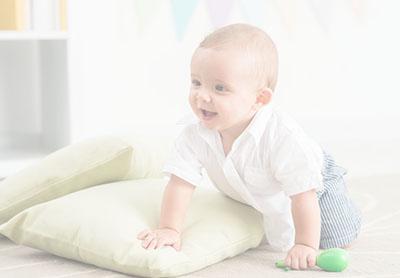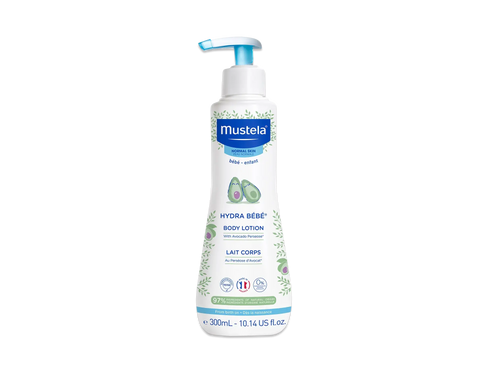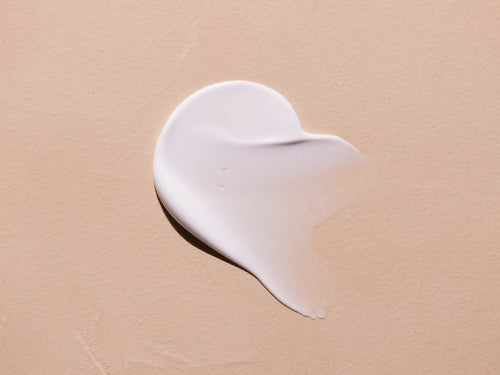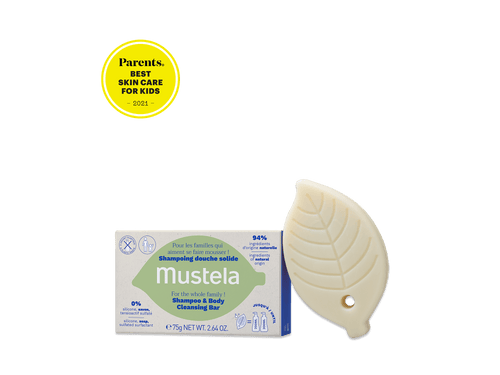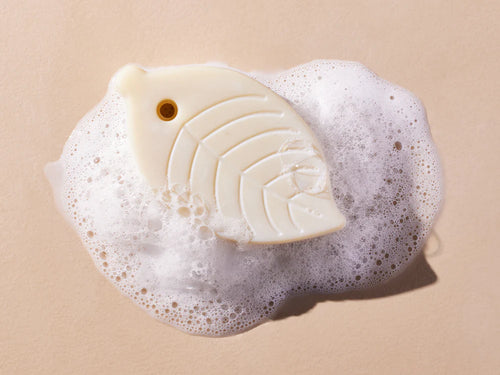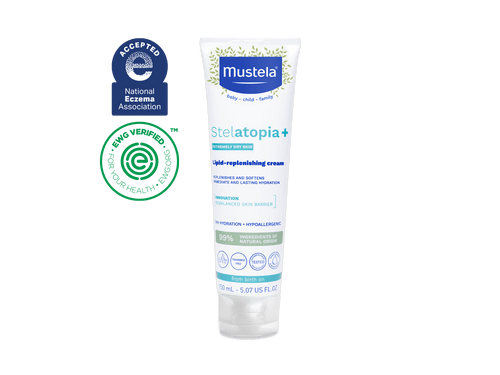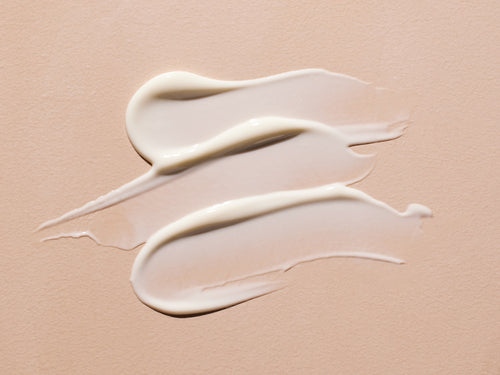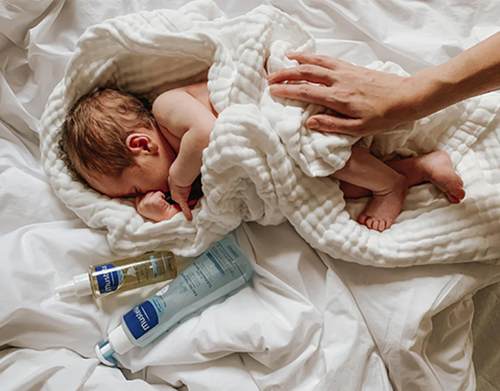As adults, we take for granted just how dangerous our homes can be. We know better than to grab wobbly tables or stick our fingers in light sockets. But babies don’t know these things, and you can’t exactly sit them down and tell them not to climb the stairs or to stay out of the cabinet under the sink. Instead, it’s your job to make these areas impossible to access in order to ensure your baby’s safety.

How exactly do you baby proof the living room, nursery, kitchen, and other parts of your home? The experts at Mustela reveal all the baby proofing measures you should take to keep your baby safe. Along the way, we’ll discuss:
- Covering electrical outlets
- Covering and securing electrical cords
- Raising blinds, blind cords, and curtains
- Locking cabinets and drawers in the kitchen and bathroom
- Raising or getting rid of tablecloths
We’ll also discuss how you can restrict access to parts of your home so you can rest easy knowing that your baby is safe at all times.
Seeing The World From Your Baby’s Point Of View

The best way to find the hazards that are unique to your home is to get down on your hands and knees and have a look around.
First, start by placing a piece of painter’s tape 3 feet from the ground around the entire circumference of the room. This will act as a guide so that you don’t underestimate what your baby can reach. Then get down on your hands and knees and start exploring the area. Have you partner take notes, or carry a notebook or mobile device with you as you crawl.
Jot down everything below the painter’s tape that might pose a threat to your crawling baby or toddler. Be sure to test all the furniture to see if it could topple over. Make note of items like lamps, heavy books, and other decorations that could be pulled from a table or low shelf. You should also make sure to stick your hands under the couches and chairs.
While this may seem like a silly exercise, it’s important that you try to think like a child and investigate every nook and cranny of the room for things that might poke, cut, or mash little fingers. Do this in every room where your baby will be allowed to roam.
Baby Proofing In Every Room
Even though you put up gates to keep your little one out of your bedroom or the dining room (for example), there may be times when you take your baby with you into those rooms to get dressed or retrieve a toy. Even though you keep an eye on them, babies can get away pretty quickly. That’s why it’s necessary to do some basic baby proofing in every room of the house.
1) Cover All Electric Outlets
You can buy outlet covers at most hardware stores and grocery stores. They’re inexpensive, simple items with a flat face that are available in a couple of different designs. They can either plug directly into power outlets or cover outlets completely to keep tiny fingers out.
2) Cover And Secure All Electric Cords
Hiding electrical cords with cord covers will prevent a curious child from being able to touch these potentially dangerous objects. Cord covers come in a variety of shapes and sizes to match any need or room design.
3) Raise All Blinds, Blind Cords, And Curtains

Babies can pull on—and get easily tangled in—blinds, blind cords, and curtains. That’s why we recommend raising all hanging items above the three-foot mark in every room of your house.
4) Lock All Cabinets And Drawers In The Kitchen And Bathroom
Where do you keep your harmful chemicals and sharp objects? In your kitchen and bathroom cabinets and drawers. That’s why it’s essential to lock each and every cabinet and drawer so your newly mobile baby can’t get a hand in. If possible, purchase locks that keep doors and drawers tightly closed so your little one doesn’t get pinched trying to open them.
5) Raise Or Get Rid Of Tablecloths
Tablecloths that hang over the side of the table are begging to be pulled on by your toddler. That would be okay if it was just the fabric, but tables are often covered in potentially dangerous items like plates, glasses, and flower pots. Minimize the temptation by shortening your tablecloth, or do away with it entirely until your child is older.
6) Keep Sharp & Heavy Objects Away From Table Edges And Counters
Remember that three-foot mark you made with painter’s tape? The edges of desks, tables, and even counters are often within reach of your baby’s curious hands. That’s why it’s important to be extra careful about what you place on these surfaces.
You may not think anything of placing a hot pan on the counter while you turn off the oven, but a moment is all it takes. You can avoid this problem by placing potentially harmful items far away from the edges.
7) Keep Dishwasher Doors Locked
A dishwasher door can easily be pulled open by a curious child. The door itself can give your little one a bump on the head, and the insides of the dishwasher aren’t particularly child-safe either. Lock that dishwasher door whenever possible.
8) Store Bath Products Out Of Your Baby’s Reach

While your little one may enjoy soap, shampoo, and bathing products during bath time, you wouldn’t want your baby to ingest them. To avoid this risk, store shampoos, cleansing gels, and bubble baths in a locked cabinet, locked drawer, or on a high shelf.
9) Disable The Locking Mechanism On All Interior Doors
We’ve heard countless stories of crawling babies somehow managing to close and lock interior doors. To prevent this from happening to you, disable these locks so it can’t happen in the first place. You may lose a bit of privacy, but you’ll gain the peace of mind that comes with your baby’s safety.
10) Reserve Lower Shelves For Your Baby’s Books & Toys

Storing some of your baby’s books and toys on the lower shelves of the bookcase in your living room is a great way to promote curiosity and mobility. Moving your books and memorabilia to higher shelves also prevents those items from being accidentally pulled off by your little one.
11) Keep Diaper Products Away From Your Baby’s Reach
Whether you change your baby on the floor or on a changing table, be sure to keep diaper products out of your little one’s reach. Bath products, diaper creams and liniments are safe for regular use, but you wouldn’t want your baby to ingest any of these while you’re focused on changing their diaper.
12) Apply Sunscreen Even When Indoors
If your baby is 6 months or older, it is essential to apply sunscreen to exposed skin if the area where your baby spends most of their time has several windows. The sun’s UV rays can damage your baby’s sensitive skin even after being filtered by window glass.
That’s why we recommend protecting your baby indoors and out by using a high-SPF mineral-based sunscreen like Mustela’s SPF 50+ Broad Spectrum Mineral Sunscreen Stick.
13) Restrict Access To Other Rooms & Stairs

Your baby will likely spend the majority of their day in only a handful of rooms: the nursery, the living room, the bathroom, and the kitchen. The rest of the house should be closed off with doors and baby gates.
Babies who have not yet learned how to pull themselves up can be kept out of specific rooms by a closed door that can’t be pushed open. Toddlers, on the other hand, are often able to reach and inadvertently open door knobs. That’s why installing a baby gate is necessary to keep your child safe. Stairs, especially, should always be blocked so your baby doesn’t have an accident.
Restricting access to other rooms and stairs serves two important purposes:
- It keeps your baby from straying into parts of the house that aren’t 100 percent baby proofed.
- It gives you peace of mind that your baby will be safe even if you’re in another room for a moment.
Make The Effort To Baby Proof Your House
There are numerous potential hazards to think about when baby proofing your home. But as long as you take the time to inspect each room from your little one’s perspective, your mobile baby or toddler will be safe and secure.


